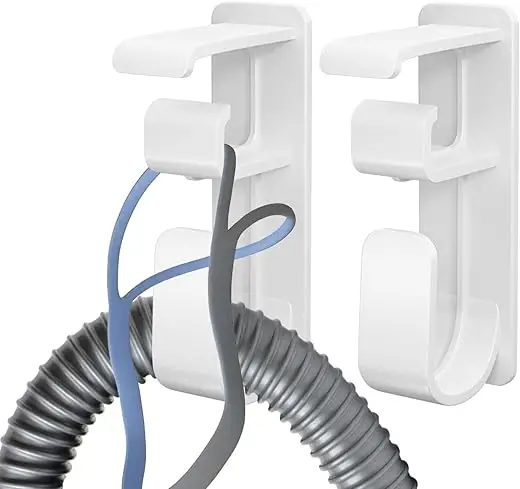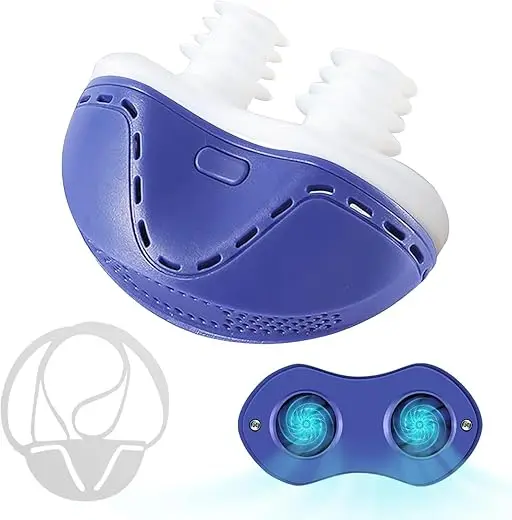Sleep apnea can go away in certain circumstances, but it rarely resolves on its own without intervention. Whether your sleep apnea disappears depends on its underlying causes, your age, lifestyle changes, and sometimes medical treatments. Understanding when sleep apnea might resolve naturally versus when it requires active treatment can help you make informed decisions about your health.
When Sleep Apnea Can Go Away Naturally
Temporary Causes That Resolve
Upper Respiratory Infections
- Severe colds or flu can temporarily cause sleep apnea symptoms
- Nasal congestion blocking airways during sleep
- Throat inflammation narrowing breathing passages
- Timeline: Usually resolves within 1-3 weeks as infection clears
- Action needed: Monitor symptoms; seek treatment if persistent after illness
Seasonal Allergies
- Severe allergic reactions can cause temporary airway obstruction
- Nasal swelling from pollen, dust, or environmental allergens
- Throat irritation affecting breathing during sleep
- Timeline: Resolves when allergen exposure ends or allergies are treated
- Prevention: Allergy management can prevent sleep apnea episodes
Medication-Induced Sleep Apnea
- Sedatives or muscle relaxants can temporarily worsen breathing
- Opioid medications may cause central sleep apnea
- Alcohol consumption before bedtime can trigger episodes
- Timeline: Improves when medications are adjusted or eliminated
- Important: Never stop prescribed medications without medical supervision
Life Stage Changes
Childhood Sleep Apnea
- Large tonsils and adenoids are common causes in children
- Natural growth may improve airway size relative to obstructive tissues
- Facial development can improve breathing passages
- Success rate: 30-40% of childhood cases improve without intervention
- Monitoring: Regular pediatric evaluation essential for tracking progress
Pregnancy-Related Sleep Apnea
- Hormonal changes during pregnancy can trigger temporary sleep apnea
- Weight gain and fluid retention contribute to airway narrowing
- Postpartum resolution: Often improves 3-6 months after delivery
- Risk factors: Pre-existing obesity or family history increase persistence risk
- Importance: Treatment during pregnancy crucial for maternal and fetal health
When Sleep Apnea Goes Away with Lifestyle Changes
Weight Loss Success Stories
Significant Weight Reduction
- Losing 30+ pounds can eliminate sleep apnea in 60-70% of patients
- Bariatric surgery resolves sleep apnea in 80-90% of severely obese patients
- Gradual weight loss through diet and exercise shows 50-60% resolution rate
- Mechanism: Reduces fatty tissue around airway, improving breathing space
Real Success Examples
- Case 1: 45-year-old male lost 60 pounds, AHI decreased from 35 to 4
- Case 2: Post-bariatric surgery patient, sleep apnea completely resolved
- Case 3: 10% body weight loss reduced sleep apnea severity by 60%
Position and Lifestyle Changes
Sleep Position Modifications
- Positional sleep apnea (occurs only when sleeping on back) can be “cured”
- Side sleeping training eliminates apnea in 50-60% of positional cases
- Elevated head position reduces apnea events in some patients
- Special pillows or devices can maintain optimal sleeping positions
Lifestyle Interventions
- Alcohol elimination before bedtime can resolve some cases
- Smoking cessation improves airway inflammation and function
- Regular exercise strengthens airway muscles and improves overall health
- Sleep hygiene optimization can reduce mild sleep apnea symptoms
When Sleep Apnea Requires Medical Treatment
Structural Problems That Don’t Resolve
Anatomical Issues
- Small jaw or receding chin (retrognathia) – permanent structural problem
- Narrow airway due to genetics – requires ongoing management
- Deviated septum – needs surgical correction to improve
- Large tongue relative to mouth size – typically doesn’t change with age
Age-Related Changes
- Tissue elasticity loss as you age makes airways more collapsible
- Muscle tone decrease in throat and tongue muscles
- Weight distribution changes with aging affect airway stability
- Hormonal changes (especially menopause) can worsen sleep apnea
Chronic Medical Conditions
Conditions That Perpetuate Sleep Apnea
- Hypothyroidism: Causes tissue swelling that narrows airways
- Acromegaly: Excess growth hormone enlarges tongue and soft tissues
- Neuromuscular disorders: Affect breathing muscle function
- Chronic heart failure: Can cause central sleep apnea
- Kidney disease: Fluid retention worsens airway narrowing
Progressive Nature Most sleep apnea cases tend to worsen over time without treatment due to:
- Natural aging process affecting airway muscles
- Weight gain tendency as metabolism slows
- Decreased physical activity with age
- Accumulating health conditions that compound the problem
Factors That Determine If Sleep Apnea Will Go Away
Positive Predictors for Resolution
Strong Likelihood of Resolution
- Childhood onset with large tonsils/adenoids
- Pregnancy-related sleep apnea
- Significant obesity with successful weight loss
- Recent onset following illness or medication
- Mild severity (AHI 5-15) with lifestyle factors
Moderate Likelihood of Resolution
- Positional sleep apnea with successful position training
- Allergy-related cases with effective treatment
- Young adults with mild cases and lifestyle modification
- Post-surgical improvement following ENT procedures
Negative Predictors for Natural Resolution
Low Likelihood of Going Away
- Family history of sleep apnea (genetic component)
- Severe cases (AHI >30) typically require ongoing treatment
- Multiple anatomical factors contributing to obstruction
- Advanced age with significant tissue changes
- Neuromuscular conditions affecting breathing control
Factors That Worsen Prognosis
- Male gender (higher baseline risk and severity)
- Post-menopausal status in women
- Chronic medical conditions affecting breathing
- Long-standing untreated sleep apnea with complications
Timeline: How Long to Wait for Natural Resolution
Reasonable Observation Periods
Temporary Causes (1-4 weeks)
- Upper respiratory infections: 2-3 weeks post-recovery
- Medication adjustments: 2-4 weeks after changes
- Acute allergic reactions: 1-2 weeks with treatment
- Recent weight gain: 4-8 weeks with weight loss efforts
Lifestyle Changes (3-6 months)
- Weight loss programs: 3-6 months to see significant impact
- Exercise programs: 2-4 months for muscle strengthening benefits
- Position training: 6-12 weeks for habit formation
- Sleep hygiene changes: 4-8 weeks for adaptation
Life Stage Changes (6-12 months)
- Post-pregnancy: 6-12 months for hormonal normalization
- Childhood growth: Annual monitoring for natural improvement
- Medical treatment: 3-6 months after treating underlying conditions
When to Stop Waiting and Seek Treatment
Red Flags for Immediate Treatment
- Severe symptoms affecting daily life (excessive daytime sleepiness)
- Cardiovascular symptoms (high blood pressure, heart palpitations)
- Safety concerns (falling asleep while driving)
- Partner observations of concerning breathing pauses
- No improvement after reasonable observation period
Benefits of Early Treatment
- Prevents complications from developing
- Improves quality of life immediately
- Reduces cardiovascular risks associated with untreated sleep apnea
- Better long-term outcomes with earlier intervention
Sleep Apnea Severity and Resolution Likelihood
Mild Sleep Apnea (AHI 5-15)
- Resolution rate: 40-60% with appropriate lifestyle changes
- Best candidates: Young adults, recent onset, identifiable causes
- Intervention success: High with weight loss, position training
- Monitoring: Every 6-12 months to track progress
Moderate Sleep Apnea (AHI 15-30)
- Resolution rate: 20-40% with significant lifestyle intervention
- Success factors: Major weight loss, surgical correction of anatomical issues
- Treatment recommendation: Usually requires CPAP or oral appliance
- Natural resolution: Less likely without major intervention
Severe Sleep Apnea (AHI >30)
- Resolution rate: 10-20% even with major lifestyle changes
- Treatment necessity: Almost always requires medical intervention
- Health risks: Too significant to wait for natural resolution
- Monitoring: Requires immediate treatment and ongoing management
Treatment Options When Sleep Apnea Doesn’t Go Away
Conservative Management
- CPAP therapy: Gold standard for most cases
- Oral appliances: Effective for mild to moderate cases
- Positional therapy: For position-dependent cases
- Weight management: Ongoing support for sustainable loss
Surgical Options
- Tonsillectomy/adenoidectomy: Excellent success in appropriate candidates
- Upper airway surgery: For anatomical corrections
- Inspire therapy: Innovative implantable treatment
- Jaw surgery: For severe skeletal abnormalities
Emerging Treatments
- Myofunctional therapy: Exercises to strengthen airway muscles
- Hypoglossal nerve stimulation: Alternative to traditional surgery
- Combination approaches: Multiple modalities for complex cases
Monitoring for Natural Resolution
Home Monitoring Techniques
Smartphone Apps
- Sleep tracking applications can monitor basic patterns
- Snoring detection features alert to potential problems
- Oxygen saturation monitoring with compatible devices
- Limitations: Not as accurate as professional sleep studies
Partner Observations
- Breathing pause documentation during sleep
- Snoring pattern changes over time
- Movement and restlessness during sleep
- Morning symptom assessment
Symptom Tracking
- Daytime energy levels and alertness
- Morning headaches frequency and severity
- Concentration and memory changes
- Mood improvements or deterioration
Professional Monitoring
Follow-up Sleep Studies
- Baseline study to establish severity
- Follow-up testing after 6-12 months of lifestyle changes
- Treatment titration studies if therapy is needed
- Annual monitoring for patients with risk factors
Medical Evaluation
- Regular check-ups with primary care physician
- Sleep medicine specialist consultation
- Cardiovascular screening for related complications
- Weight and lifestyle counseling support
The Reality: Most Sleep Apnea Requires Treatment
Statistics on Natural Resolution
Overall Resolution Rates
- Less than 10% of diagnosed sleep apnea cases resolve completely without intervention
- 30-40% may improve significantly with major lifestyle changes
- 60-70% require ongoing treatment for symptom control
- 80-90% of severe cases need medical intervention
Age-Related Patterns
- Children: 30-50% resolution rate with growth and development
- Young adults: 20-30% resolution with lifestyle modification
- Middle-aged: 10-15% resolution rate without treatment
- Elderly: Less than 5% natural resolution rate
The Importance of Professional Guidance
Why Professional Evaluation Matters
- Accurate diagnosis of sleep apnea type and severity
- Identification of underlying causes that might be treatable
- Risk assessment for cardiovascular and other complications
- Treatment planning tailored to individual circumstances
Risks of Waiting Too Long
- Cardiovascular complications can develop during untreated periods
- Quality of life impacts from ongoing symptoms
- Accidents from daytime sleepiness
- Progression to more severe disease requiring more intensive treatment
Making the Decision: Wait or Treat?
Factors Supporting Watchful Waiting
Consider Observation When:
- Recent onset following identifiable cause (illness, medication, pregnancy)
- Mild severity with minimal symptoms
- Active lifestyle changes in progress (weight loss, exercise program)
- Young age with potential for natural improvement
- Temporary contributing factors that may resolve
Factors Supporting Immediate Treatment
Seek Treatment When:
- Moderate to severe sleep apnea (AHI >15)
- Significant daytime symptoms affecting work or safety
- Cardiovascular risk factors present
- Partner concerns about breathing pauses
- No improvement after 3-6 months of lifestyle changes
The Bottom Line: Hope for the Best, Plan for Treatment
While some cases of sleep apnea can resolve naturally, the majority require active treatment to prevent serious health complications and improve quality of life. The key is working with healthcare professionals to determine whether your specific case has potential for natural resolution or requires immediate intervention.
Remember:
- Early evaluation is always safer than waiting
- Lifestyle changes can help even if sleep apnea doesn’t completely resolve
- Treatment is highly effective when natural resolution doesn’t occur
- Monitoring is essential whether waiting or treating
Don’t gamble with your health. If you suspect sleep apnea, consult with a board-certified sleep medicine physician who can help determine the best approach for your specific situation. Whether your sleep apnea goes away naturally or requires treatment, professional guidance ensures the safest and most effective outcome.
This information is for educational purposes only and should not replace professional medical advice. Always consult with qualified healthcare providers about your specific sleep apnea concerns and treatment options.



